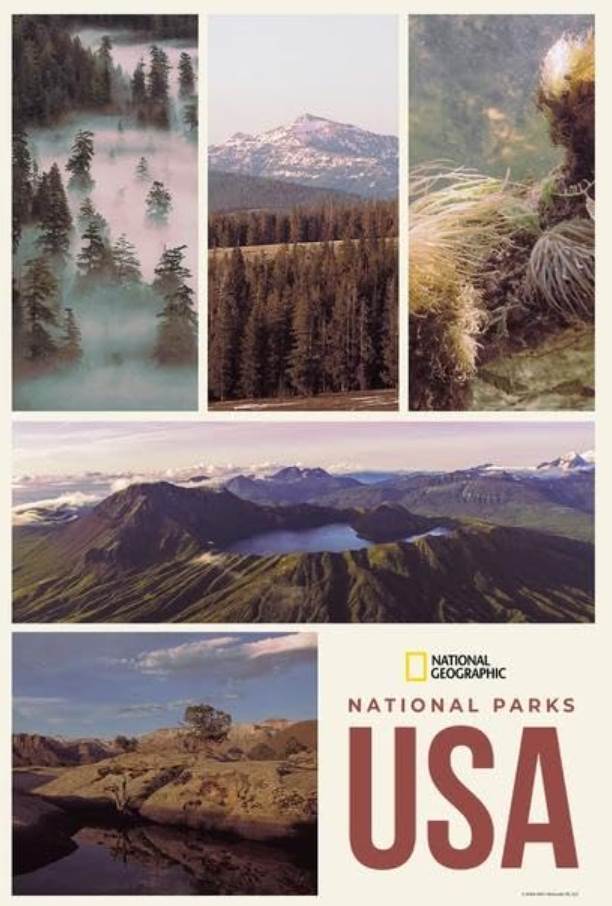Review: National Geographic’s “National Parks: USA” Gorgeously Explores America’s Natural Wonders
The United States of America is one of the most topographically and ecologically diverse places on the planet. Featuring land sprawling from subtropical zones all the way to the frigid subarctic climates of Alaska, America’s vast collection of National Parks highlights the natural wonders of our world. In National Geographic’s new series, viewers can step into these gorgeous landmarks from the comfort of their own homes.
Through 5 episodes, viewers of National Parks: USA will get to experience the beauty of five different National Parks. Narrated by actor Michael Spears, this cinematic and intimate showcase of nature dives into the worlds of Zion, Yellowstone, Katmai, Everglades, and Olympic National Parks. Each approximately 45-minute episode explores an individual park through up close looks at how the unique animals, rock structures, climates and more interact with each other.
Starting out in Zion National Park, Utah’s first-ever protected park, viewers will get a high definition look at the unique slot canyons and cliff sides of this otherworldly place. Including turkeys, tarantulas, and bighorn rams, the series showcases how these unique creatures utilize the iconic terrain to their advantage.
Next up, we are brought to America’s first national park, Yellowstone. Founded in 1871, Yellowstone’s unique positioning above a super volcano decorates the land with more than half of the world's geysers. Exploring the park through the seasons, viewers will get to see how the wolves, bears, otters, bison, foxes and more interact with this ever changing place.
Heading up to the northern part of the infamous Pacific ring of fire, the series showcases Alaska’s Katmai National Park. Housing at least 14 active volcanoes, this mountainous region has fierce and competitive wildlife. In summer time, this National Park experiences upwards of 18 hours of sunlight. Back in 1912, one of the most cataclysmic eruptions occurred. Happening prior to its dedication as a National Park, scientists explored this ash-covered area and found huge steam pillars and a vast beauty. Scientists were able to convince the US government that Katmai was the next Yellowstone. While the smoke stopped billowing, the gorgeous and isolated National Park is filled with natural beauty.
With its highest point being only 8 feet above sea level, Everglades National Park is one of the flattest places on the planet. Featuring both subtropical wetlands and semi-aquatic marine ecosystems, this over 2 million acre marsh is incredibly biodiverse. Known for its impressive collection of alligators, the Florida-located park is often explored by boat. It also contains both fresh and salt water throughout its impressive ecosystem. Interestly, fire is a huge part of the life-cycle in the everglades. Frequently experiencing wildfires, the Everglades always rises from the ashes with seeds buried under the rubble quickly sprouting fresh and diverse vegetation.
The last stop in the series takes us to Washington's Olympic National Park. The constantly rainy one million acres of this park is cluttered with glacier-capped mountains, hot springs, tidepools and sprawling forests.
I had the opportunity to watch all 5 episodes of this gorgeously shot series. Featuring the beautiful realities of nature, the incomparable ecosystems of America’s National Parks are captured with grace and specificity. While watching the series, I felt like I was placed directly into these perfect places. The high-definition shots really capture the intimate serenity of all five parks, but never truly shy away from the powerful forces of Mother Earth. They never showcase animals being killed, minus a few salmon, the series never hides viewers from the natural food chain. Highlighting how these parks provide unique challenges for survival, the series powerfully connects viewers to our place in nature. While there is narration, it is just as peaceful as every nature-showcasing shot. The series is also immensely informative about the history of our National Parks. One of my favorite facts that I learned was Yellowstone's reintroduction of wolves. Initially, the park made an effort to decimate the wolf population. Seen as a nuisance, park rangers would hunt them down. However, in the 1990s wolves were reintroduced to the ecosystem, providing balance back to the National Park. Helping to keep deer population down, wolves force herbivores to move and graze in other locations. Additionally, each episode features Native American people sharing information on how humans utilized these natural wonders. National Parks: USA captures both the wild wonders of our planet while highlighting the responsibilities humans have to protect and keep balance for these ecosystems. The series also boasts a spectacular music score. This easy, informative, and visually stunning watch is a must.
National Parks: USA premieres on National Geographic tomorrow, September 8th. Additionally, you can catch the series on Hulu the next day.



